Abstract
The education of seniors is one of the adult education domains that was insufficiently studied in the last decades although the seniors group already represent 17.4% of the total population, according to the most recent demographical data report (
Keywords: Adult educationICT in adult educationdigital curriculumSILVER-CODE European projectlearning interestprogramming
Introduction
Today, we are witnessing an impetuous development of the education and communication sciences (Vlăduțescu, 2014; Țenescu, 2009). These transformations are not only quantitative but also qualitative. In the same time, new directions and increasingly sophisticated concepts emerge, trying to capture the specificities of the various dimensions of the paideutic act (Stoian, 2016, Bunăiașu, 2012). Together with concepts such as adult education, lifelong learning, digital curriculum, the terms of seniors' education, and particularly education of the third age, are emerging (Strungă, 2011). This increasing focus on seniors' education can be partially explained by demographic factors: increased life expectancy, low mortality rates and birth rates. There is, therefore, a change in the ratio and share among demographic groups, the elderly forming an increasingly larger and, consequently, more important social category. At the pedagogical level, we can also envision the development and configuration of a new field, with special promises and perspectives - the pedagogy of seniors and as a particular subdomain - the pedagogy of the third age people (Strungă, 2011). One of the recent studies in the field of seniors’ education concluded that the participation of seniors to educational activities is even lower than the overall participation of adults and that the penetration of ICT in seniors' education seems to be “casual and fragmented across institutions and organizations” (Strungă, 2015, p. 89). Another conclusion was that, even if the adult education providers organize courses for seniors, the use of ICT is “still relatively low, very fragmented and depending a lot of the institutions' technical infrastructure and financing and also of the instructional design, especially trainer's pedagogical strategy” (Strungă, 2015, p. 89).
According to an important European report published by EUROSTAT, in the situation of Romania, older people represent 17.4% of the entire population, and the ageing trend is increasing, in comparison to the last two decades. Furthermore, we can find many differences in how the seniors use the internet, according to the socioeconomic status and age. They also use the Internet much less frequently than the young people. (EUROSTAT, 2016). We highlighted in the SILVER-CODE official newsletter, specifically the section concerning Romania, that: “there is a great potential in the development of the Romanian digital economy by making the digital services more accessible to the larger population. An additional challenge is to encourage older people to participate in educational programs that aim at reducing the digital divide and empower seniors to develop digital competences” (Strungă & Martin, 2017, p. 3).
Problem Statement
In order to answer the need of developing seniors’ digital competences, particularly those aiming coding (or programming), the project SILVER CODE was initiated aiming to create an online training platform for developing digital literacy of elder citizens and especially learning the basics on how to program. The envisioned results of the project are: a) fostering active ageing by teaching senior citizens digital literacy and basics of coding; b) improvement of personal skills and motivation; c) favouring active participation; d) favouring the promotion of non-formal and informal learning among adult learners; d) optimization of intergenerational learning and better use of the new technologies by youngsters and elders. The main activities envisioned for the project are, according to the project brochure: a) a training course for basics of coding; b) developing and maintaining the SILVER Coding community – e-platform for exchanging knowledge and ideas and c) peer-to-peer events aiming the empowerment of the participants who will become trainers themselves. The target group are elderly EU citizens, especially people over the age of 55 years and retired people. The project includes also young people as an indirect target group, because they will be involved in intergenerational learning activities, along with seniors, particularly by tutoring and mentoring. Most of the seniors will be medium-high-skilled, such as retired professionals and also volunteers from several international cultural associations.
In the framework of the SILVER CODE European project, a survey was carried out in order to analyse the attitudes of seniors concerning programming, previous programming experience, the level of digital competences development and educational preferences for a prospective training course in coding. In this paper, we proposed to analyse only the situation of the surveyed Romanian seniors and their level of interest towards programming, in the context of SILVER CODE project. The partners in the SILVER CODE projects are the following institutions: 1) Eurocrea Merchant (Italy), 2) Slovenian Third Age University (Slovenia), 3) Die Berater (Austria), 4) Aidlearn (Portugal), 5) Politehnica University of Timisoara (Romania), 6) Uniwersytet Wroclawski (Poland).
Research Questions
In the context of SILVER CODE survey, which was carried out at an international level, we elaborated a set of research questions, particularly addressed to the Romanian participants in the study, such as the following: a) How interested are the Romanian project participants in learning programming? b) How much experience have the Romanian participants in programming?; c) What kind of learning methods seniors would like to use in a programming training course?.
We also elaborated several hypotheses, as follows: a) It is presumed that most of the participants are interested in taking part of a programming course; b) It is presumed that most of the participants do not have any experience in programming; c) It is presumed that the majority of participants are interested in mentoring or e-mentoring. In the context of our study, the independent variables of the case study are represented by mental images, models and values correlated with the use of ICT, particularly programming, previously acquired by the subjects. The dependent variables, however, are related to the level of interest, learning preferences towards the use of certain instructional methods. Regarding intermediate variables, we can point out the seniors’ educational and socio-cultural experiences (Bunăiașu & Strungă, 2016).
Purpose of the Study
The aim of the study was three-folded. First, the main purpose was to analyse the survey data in order to optimize the digital curriculum. The second purpose was to survey the seniors’ attitudes concerning: the use of ICT and particularly their interest in programming; the perceived benefits of a programming training course; the preference towards certain learning and assessment methods. The third purpose was to gather factual data concerning the concrete situation of the Romanian participants: their age, gender, place of residence, access to fast broadband internet, previous experience in programming.
Research Methods
Sample
Since our case study, in the initial phase, is an approach to optimize the digital curriculum only for the participants in the SILVER CODE project, we limited our convenience sample to 45 participants active in two NGOs from Timisoara: Cultural Association “C.Brîncuși” and Romanian Writers League Timisoara-Banat Branch. From the total of 45 answers, just 43 were used in the study. The most important segment of the sample was in the 65-69 age group. Also, females represented 69,8% of the subjects comparing to 30.2% males. All participants resided in urban areas. Also 60.5% of the subjects has access to fast broadband internet from home.
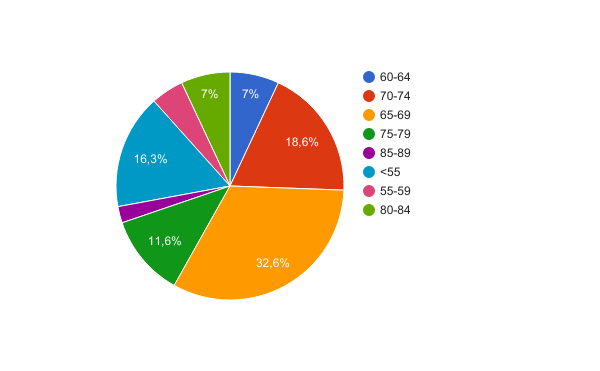
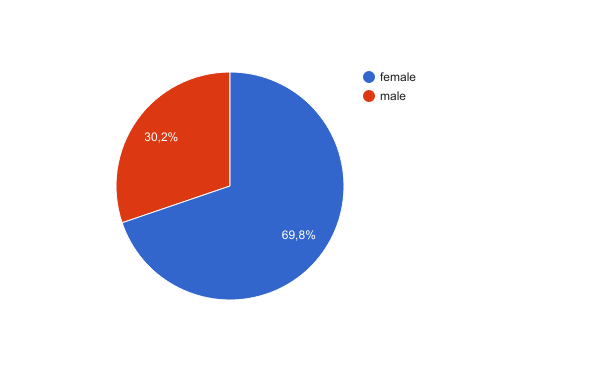
Instrument and Procedure
The research instrument that was used in the study was created in the framework of the SILVER CODE project and translated in Romanian after carefully taking into consideration American Psychological Association recommendations concerning gender and age. The questionnaire included 18 items, from which 17 were closed and only one open. The research instrument was pretested in the framework of SILVER CODE meetings of the Romanian team and reviewed by two experts in education sciences. Their feedback was added in the last version of the questionnaire.
The level of interest concerning programming was measured using Q10 (question 10) “Are you interested in coding? Please choose one answer” with the three options: a) yes; b) no; c) I don’t know. The existence of previous educational experiences regarding programming was measured using Q11 “Are you interested in coding? Please choose one answer” with the same three options: a) yes; b) no; c) I don’t know. The preference for learning methods was measured through Q15 “What kind of learning methods would be most suitable for you? Please choose one answer” with the following options: a) learning with a mentor; b) learning on my own, at home, using tutorials; c) with a partner (pairwork); d) a combination of methods and places; e) I am not interested in learning coding; f) other.
Afterwards, the questionnaire was applied by the researchers, with the agreement of the cultural associations’ presidents, at the weekly meetings of the Cultural Association “C.Brîncuși” and “Romanian Writers League Timisoara-Banat” in March 2017 and was also made available online via Google Forms, in Romanian. In the same time, the questionnaire was applied in the other stated that participated in the project. The survey data was processed using PSPP 0.10.2 and Google Forms.
Findings
Regarding the first hypothesis “It is presumed that most of the participants are interested in taking part of a programming course”, the survey results show that the majority of seniors (88.4%) are interested in programming. Such results can be partially explained by the participants’ high level of education and enthusiasm towards any educational endeavour. The first hypothesis is, consequently, validated.
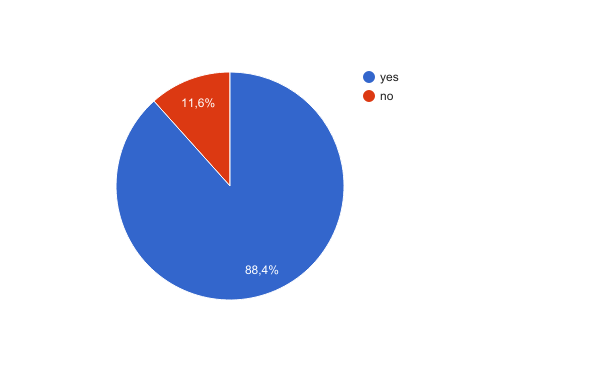
Concerning the second hypothesis “It is presumed that the majority of the participants do not have any experience in programming”, the survey results show that the majority of seniors (79.1%) do not have experience in programming and 20.9% have some experience in programming. Even if some seniors know elementary notions of programming, having tried different online courses (such as those available from www.edx.com) they might not have updated competences regarding current programming languages or devices used in coding. The second hypothesis is, consequently, validated.
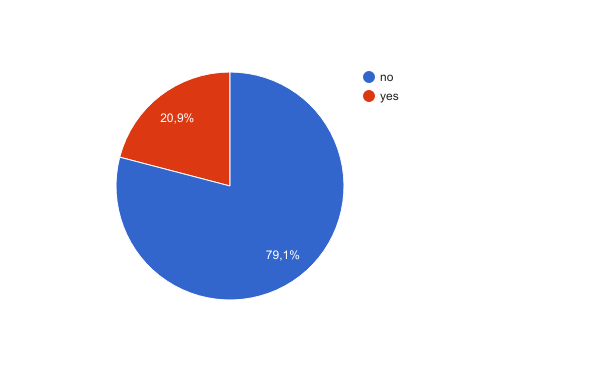
Concerning the third hypothesis “It is presumed that the majority of participants are interested in mentoring or e-mentoring”, the survey results show that the majority of seniors (69.8%) would like to learn with the help of a mentor; 20.9% of the seniors opted for independent study, at home, with tutorials; 4.7% of the subjects preferred to learn with a partner (activities in pairs) and 2.3% are interested in a mixed educational strategy. The third hypothesis is, consequently, validated.
It is remarquable how many seniors are interested in mentoring and e-mentoring and this interesting result can be partially explained by the participation of many subjects in previous projects such as “Danube Networkers - Danube Neighbours at Work (DANET)”, Danube Lectures (DALEC 1 & 2) or “Danube Stories (DASTO)”. These projects highly encouraged intergenerational learning activities, mentoring and other innovative methods in adult education.
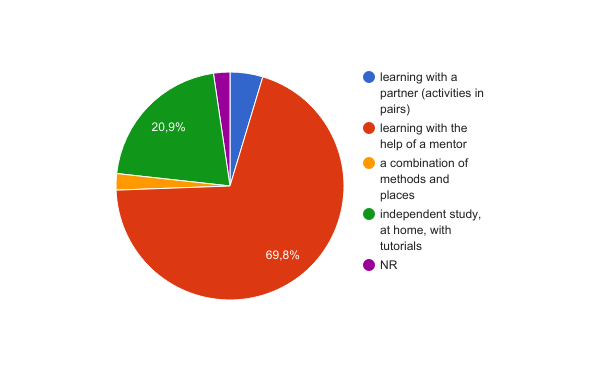
Conclusion
First of all, as confirmed by other studies in the field of adult education (Strungă, 2011; Strungă, 2015), seniors are very interested to participate in educational programs focused on ICT, particularly those involving programming. This interest, again, may reflect the rarity of such programs, which is alarming when we think about the large number of seniors living in Romania and, more, about the demographic projections for the next decades (in 2050 about half of the Romanian population will be composed of seniors according to EUROSTAT). Secondly, seniors are willing to invest a lot in their own education despite the poverty, the economic crisis and the unworthy status they have in our country. This should be of particular importance for the main tenderers in the education of seniors in Romania and especially for universities. The international trend in seniors' education highlights the role universities as education providers for the elderly either in the form of specialized departments (a preference expressed especially by seniors in the category of "children of war" or "children of the economic crisis") or by integrating their offerings with the general education (a preference expressed by baby boomers, ie seniors born after 1946) in order to avoid educational age segregation. Third, we found that the majority (especially those already participating in educational activities) have access to a personal computer and the Internet. This result can be capitalized by developing a seniors' curriculum based on new trends in ICT (Web 2.0, Web 3.0, virtual learning communities) as is the case in other European countries such as Germany (the benefits of such educational programs are emphasized in particular by researchers at ZAWiW and ILEU institutes). Fourthly, the research has highlighted some of the seniors’ learning preferences, that can be used to optimize SILVER CODE digital curriculum and in order to develop new courses in the field of seniors’education. The fact the most of the seniors do not have experience in programming is, in our opinion, a great potential for new learning and not a reason to be discouraged in front of the many obstacles that seem to appear in the process of developing seniors’ digital competences.
Acknowledgments
We would like to thank Politehnica University of Timisoara, that represents Romania in SILVER CODE European project, professor Ciprian Bogdan Chirilă and Cătălin Martin. The authors also want to thank the international team of SILVER CODE project for developing the research instrument and menthodology.
References
- Bunăiașu, C.M. (2012). Elaborarea și managementul proiectelor educaționale. Bucureşti: Editura Universitară.
- Bunăiașu, C.M. (2015). Curricular premises and strategies in order to develop students’ intercultural competences, Social Sciences and Education Research Review, 1, 11-24, 2015b
- Bunăiașu, C.M., Strungă, A.C. (2016). Perspectives and Modalities In Order to Develop the Didactic Staff’s Intercultural Competences. Social Sciences and Education Research Review, 3(2)/2016, pp. 24-35.
- European Commission (2017). DESI 2017. Digital Economy and Society Index 2017. List of indicators. Country profile. Brussels: European Commission. Retrieved March 09, 2017 from https://ec.europa.eu/digital-single-market/en/desi
- EUROSTAT (2016). Internet access and use statistics - households and individuals. Retrieved March 09 from http://ec.europa.eu/eurostat/statistics-explained/index.php/Main_Page SILVER-CODE Project Newsletter
- Stoian, A. C. (2016). The Efficiency of Differentiated Learning – Independent Learning Situations Versus Collaborative Learning. Network Intelligence Studies, IV(1), 51–59.
- Strungă, A.C. (2011). Educația seniorilor – perspectiva DANET. Craiova: Editura Universitaria.
- Strungă, A.C. (2015). The Role of University in Seniors’ Education: A Romanian Perspective. Social Sciences and Education Research Review, 2(1)/2015, pp. 81-90
- Strungă, A.C., & Martin, C. (2017). Our Background Experience - ROMANIA. SILVER-CODE Project Newsletter, 1, 3. Retrieved July 20, 2017, from http://www.utzo.si/wp-content/uploads/2017/05/SILVERCODE-Newsletter1-April-2017_EN.pdf
- Ţenescu, A. (2009). Comunicare, sens, discurs. Craiova: Editura Universitaria.
- Vlăduţescu, Ş. (2014). Didactic Communication as Tool in European Integration. Communications in Applied Sciences, 2(1).
Copyright information

This work is licensed under a Creative Commons Attribution-NonCommercial-NoDerivatives 4.0 International License.
About this article
Publication Date
28 June 2018
Article Doi
eBook ISBN
978-1-80296-040-2
Publisher
Future Academy
Volume
41
Print ISBN (optional)
-
Edition Number
1st Edition
Pages
1-889
Subjects
Teacher, teacher training, teaching skills, teaching techniques, special education, children with special needs
Cite this article as:
Strungă, A., & Bunăiașu, C. M. (2018). Seniors’attitudes Towards Programming: A Romanian Case Study. In V. Chis, & I. Albulescu (Eds.), Education, Reflection, Development – ERD 2017, vol 41. European Proceedings of Social and Behavioural Sciences (pp. 572-579). Future Academy. https://doi.org/10.15405/epsbs.2018.06.67

